Matador Network's Blog, page 886
April 7, 2020
How blue crabs became taste of SC

Soft shell crab season has been effectively, if not officially, canceled. And in South Carolina Lowcountry, that’s basically like canceling Christmas.
In the fallout from COVID-19, the usually-bustling restaurants of Charleston, Beaufort, and the rest of the region are missing out on a season when diners typically flock in for the salty-sweet goodness of soft shell blue crabs.
“It’s the most important day in the calendar,” says Hanna Raskin, food editor and chief critic at the Post and Courier in Charleston. There’s not a hint of hyperbole in her voice. “Soft shell season, everyone goes haywire around that. I don’t think people realize how important it is.”
In early April, the Lowcountry’s famous blue crabs molt their exoskeletons and are, for a brief moment, soft enough to eat whole. The season can last for as long as a few weeks, or last only a couple of days. It comes but once a year, and this year the timing was particularly bad.
“Soft shell season started like the day after the governor mandated we close our dining rooms,” says Brandon Carter, the chef and owner of Farm Bluffton. “That was a real bummer for a lot of people around there. It’s something they wait all year for, and we are completely at the mercy of Mother Nature in terms of soft shells.”
With soft shell season all but gone for 2020, Carter, like many restaurateurs, is trying to keep the spirit — as well as his restaurant and local fishermen’s livelihoods — going despite the unusual conditions.
“We wanted to make sure people had something comforting, and we wanted to make sure our local fishermen didn’t miss out on this important time of the year,” Carter says. “So even now, on our takeout menu we have fried soft shells every day, soft shell crab sandwiches, rice bowls with fried soft shell, just to keep that going.”
His comment speaks to the overall importance of blue crab in this part of the country: It’s both comfort food and economic driver, part of not just the food culture but also the culture of social gatherings and family picnics. They are childhood memories and long summer afternoons on the water. And perhaps more than any other food in the Lowcountry, blue crabs just taste like home.
A food tradition built by enslaved people
Blue crab’s roots here begin with the Gullah-Geechee people, enslaved West Africans who worked the rice and cotton plantations along the Carolina coast. When plantation owners fled the mosquitoes and oppressive humidity during the summer, the Gullah-Geechee were left nearly alone on the islands. They lived mostly off what they could find. And during summer, that meant blue crabs.
“It was one of the free accessible foods, especially when people had the opportunity to get what they could out of creeks. And blue crabs were abundant,” says BJ Dennis, a personal chef and caterer in Charleston who specializes in foods of the African diaspora. “Eating crab was a big thing in West Africa also, so it went hand in hand.”
The Gullah-Geechee created blue crab dishes like the ubiquitous blue crab rice, which in its simplest form is crabmeat, rice, and vegetables. They also developed blue crab gravy, blue crab and okra stew, blue crab gumbo, and scores of other foods you find on Lowcountry menus today.

Photo: Sam Mase/Shutterstock
Over the years, blue crab spread from the islands to kitchens and picnic tables around the region, garnering massive popularity along the way.
“It’s really a story of working with what you got,” Carter says. “There’s an abundance of blue crab in the area, so it’s been a sustainable and renewable resource in the Lowcountry for a long time.”
Because it was so accessible, it became a key ingredient in local social gatherings.
“People at home in their backyard, they throw down with a low country boil,” says Craig Reaves, a commercial fisherman whose family runs Sea Eagle Market in Beaufort. “That’s shrimp, potatoes, corn, and sausage. You add blue crabs to that, and you have a big pot, call it frogmore stew. Pour it out on your picnic tables in your backyard, it’s part of the social fabric.”
Catching blue crabs is also part of the experience one has growing up in the Lowcountry, like going to “the shore” if you grew up in the Northeast, or finding swimming holes in the Midwest.
“My kids who have grown up most of their lives here, catching blue crab with a chicken wing or chicken neck is just something you do,” Carter says.
An economic staple goes into decline

Photo: aleigha blakley/Shutterstock
During the second half of the 20th century, blue crab became a major part of the local fishing economy, too. Families like Reaves’ dominated the blue crab trade, which peaked in the late 1970s. But a combination of over fishing and international competition has led to a steady decline since 2000.
“It was big, big business 30, 40, 50 years ago,” Reaves says. “We had factories, picked and canned crab, so there was a lot more industry here in the ’50s, ’60s, and ’70s. But, ya know, the imports kinda took over in the ’90s and early 2000s.”
Today, according to the National Oceanic and Atmospheric Administration, more than 80 percent of seafood consumed in the US is imported. The labor involved with catching and picking blue crab is significant and expensive; sourcing it from countries with cheap labor makes for a cheaper product.
Reaves says most of the blue crab you find in restaurants comes from Southeast Asia and South and Central America, so the reduced supply of local crab has led to an increased demand.
“It has a smaller role than it used to,” he says. “But those of us who’ve weathered the storm have done well.”
Because Lowcountry blue crab is now in far shorter supply, the handful of people who still catch it can demand high prices. Carter says he can normally buy jumbo lump meat along the Gulf Coast for about $24 a pound. The jumbo lump he purchases from the Bluffton Oyster Company can be upward of $38 a pound.
It’s also expensive because crab picking isn’t a job many people want to do anymore. In the picking house at Bluffton Oyster, rows upon rows of women sit picking blue crabs at concrete tables, a trade they have mastered for decades. They also all look like they could have retired 20 years ago.
“The youngest one is like 70,” Carter says. “What that says to me is this is something younger generations are not interested in. It’s hard, backbreaking work, and Bluffton Oyster is the only place I’ve heard of that harvest, cooks, and picks crab in the Lowcountry.”
“A connection to the sea, a connection to our soul”
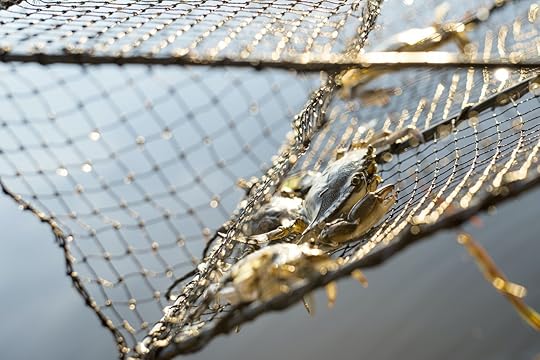
Photo: Modern Meta Photography/Shutterstock
Though the industry surrounding blue crab may be diminishing, its flavor is still robust. The taste of blue crab is endemic to the region, and while it may not be the sweetest or richest crabmeat on the market, it tastes like South Carolina.
“I knew it was something special from the first time I tasted it,” Carter says. “It’s fresher, sweeter, cleaner, than any other crab I’d had. You get a better flavor of the water, of the ocean. It tastes like the water smells, it has a merroir to it. Not as sweet as Dungeness or snow crab, but it tastes right for where we are.”
One of the South’s most revered food critics agrees.
“I think it’s delicious,” says the Post and Courier’s Raksin. “Crab is the sweetest meat, it has a longstanding history here. It has a connection to the sea, a connection to our soul.”
Chefs use this flavor in a number of different ways. There is the traditional frogmore stew, which Denis says is fairly popular among his private clients. Blue crab rice is the classic presentation, and probably the best way to try it if you haven’t had blue crab before.
But you can find interesting twists too. Dennis says he takes fat from the crabs and creates a blue crab butter, which he serves with his crab boils. Carter serves it with pepper paste and sofrito, then grills it on the plancha to give it a crunchy texture. “Like your grandmother’s blue crab rice,” he says.
Though it’s not hard to find on Lowcountry menus, you won’t find blue crab at white tablecloth restaurants or many of the chic eateries people travel to Charleston for.
“I don’t think it’s transitioned heavily into high end kitchens,” Dennis says. “It’s not looked upon as elegant, because you gotta get a little messy. But for the seafood shacks, the mom and pops, true local, it’s still a tradition to have your blue crab all year round.”
Raskin says she sends people to Nana’s Seafood & Soul, an unassuming wood house that, according to the critic, is “the only place downtown that does a decent garlic crab.”
Of course, for now, no restaurants are doing much of anything in downtown Charleston, and this year’s soft shell season won’t be the boon it usually is. But the warm waters of July through September are not far off, and with those come the biggest blue crab hauls of the year. And though diners may have to get a little dirty to enjoy it, the timing of peak blue crab season, unlike that of soft shell crab, should be perfect. 

More like this: In South Carolina, Gullah-Geechee cuisine gets its long overdue moment in the spotlight
The post How blue crabs became the taste of South Carolina Lowcountry appeared first on Matador Network.

Charts show sharp decline in traffic

One side effect of the coronavirus crisis and the consequent stay-at-home orders, is the dramatic reduction in traffic in cities all around the world. This would be good news if we actually had someplace to go, but as it is, the few times we do leave the house are for quick runs to the grocery store, the post office, or to pick up food.

This map, with data compiled by TomTom for its Traffic Index and shared on Reddit by user DanClark93, shows just how drastically traffic has declined in major cities across the world. It compares traffic from March 2019 to traffic in the same month of 2020, charting the volume at each hour of the day.
In New York, London, Edinburgh, and Paris, that decline is obvious. In March 2019, the colors indicate fairly consistent traffic throughout each hour of the day. Looking at the March 2020 square, however, traffic has effectively grinded to a halt. Wuhan is the most extreme example of this slowdown. As China instituted a complete lockdown of Wuhan — the city where the virus originated — hardly even letting citizens out of their homes, it makes sense that there would be almost no cars on the street. 

Congestion in New York City in the past 7 days (Photo: TomTom/Reddit)

Congestion in Wuhan in the past 7 days (Photo: TomTom/Reddit)

Congestion in London in the past 7 days (Photo: TomTom/Reddit)

Congestion in Paris in the past 7 days (Photo: TomTom/Reddit)

More like this: The 10 most freakishly terrifying switchback roads in the world
The post These charts show the dramatic decline of traffic in cities around the world appeared first on Matador Network.

Seeing the northern lights in Alaska
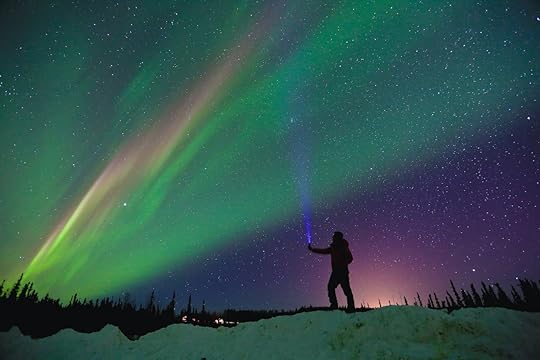
There’s a feeling of undeserved shame that comes with visiting Alaska in the winter and not seeing the northern lights. If you went to the 49th state during aurora season — August 21 through April 21st — you can bet people will excitedly ask you, “Did you see the northern lights?” and wait hopefully for your response. Nevermind the epic dog sledding, snowmobiling, ice fishing, snowshoeing, or other winter adventures you may have done; admitting that you missed the lights will be met with a deflated “Oh…” and a quick change of subject.
Alaska is almost synonymous with the aurora borealis; it captures our imaginations like a mythological phenomenon and many plan their entire vacations solely around seeing them. Although not seeing the lights won’t ruin your trip, let’s be real. Seeing them will make it a whole lot better. Whether you’re already planning an Alaska trip or heading to the Last Frontier specifically to chase the lights, make sure you spend a few days in Fairbanks — one of the best places in the world to see the northern lights.
What exactly are the northern lights?
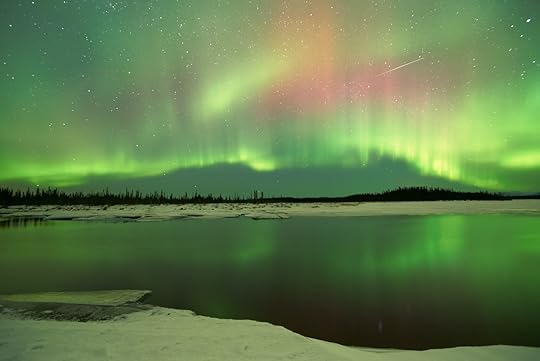
Photo: NotYourAverageBear/Shutterstock
Everyone knows what the northern lights look like, but the science behind what actually causes them tends to be more mystifying. The northern lights are a natural celestial phenomenon, called aurora borealis in the north and aurora australis in the south. The aurora originates on the surface of the sun, when solar activity produces a gas cloud called a coronal mass ejection (CME). When one of these ejections reaches our planet two or three days later, it collides with Earth’s magnetic field, which deflects the solar flares. However, these currents of charged particles flow into the northern and southern polar regions, since the magnetic field is weaker there. The result is dazzling, as light shifts and courses throughout the sky.
The striking colors of the aurora change depending on the types of atoms and ions colliding with the atmosphere. The color is also affected by altitude, since the ions collide with different gases, depending on the elevation above Earth. Blue violet and red colors appear below 60 miles, bright green is strongest between 60 and 150 miles, and ruby reds appear when the ions are more than 150 miles above Earth. (Earth’s atmosphere reaches 300 miles high.)
Unfortunately, it takes more than a clear day to be certain of spotting aurora activity. The most important factor in predicting the aurora’s appearance is sunspot and solar flare activity. Sunspot activity operates on an 11-year cycle, with the number of sunspots and solar flares increasing in frequency until the solar maximum is reached. The more solar activity, the higher the likelihood of seeing the aurora. Right now, we’re approaching peak solar activity, with the solar maximum expected to occur between 2023 and 2026. This means if you plan a trip to Alaska within the next year or two, your chances of seeing the aurora are significantly higher.
Fairbanks is the unofficial aurora capital of the US
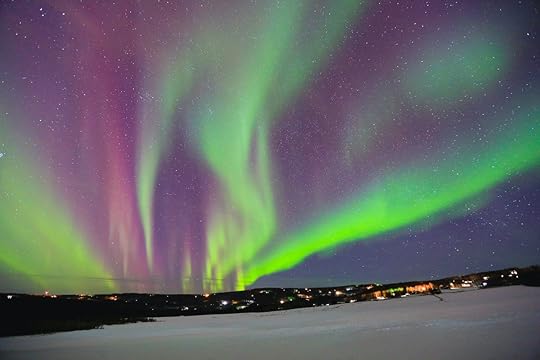
Photo: youli zhao/Shutterstock
If you’re really lucky, and if solar activity is extremely high, you might be able to glimpse the aurora from northerly states like Minnesota, Michigan, and Maine, but to have a consistent chance of seeing the lights all winter, Alaska reigns supreme. Quite simply, it’s just farther north than everywhere else in the country. Much farther. Fairbanks sits at a latitude of 64.8 degrees, and is widely considered by Alaskans to be the best place for viewing the phenomenon.
Fairbanks is ideally located under the “Auroral Oval,” a ring-shaped zone over the far north where aurora activity is at its highest. A heavy concentration of solar activity happens here, which is the most important factor for predicting an appearance of the aurora borealis. But regardless of solar activity, if the skies are cloudy you won’t even be seeing stars, much less the northern lights. Fairbanks’s distance from the coast and low precipitation results in consistently clear nights. The lights appear so frequently above Fairbanks that people staying at least three nights — and actively keep their eyes peeled for the lights — increase their chances of seeing the aurora by 90 percent.
The best ways to see the northern lights
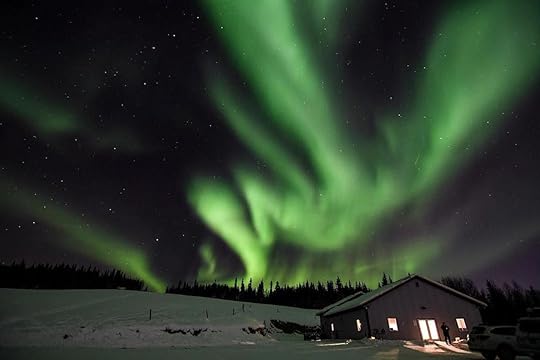
Photo: Aurora Pointe Activity Center/Facebook
It’ll take a bit more effort than just booking a flight and showing up in Fairbanks, however, to actually have a memorable northern lights experience. While Fairbanks isn’t exactly New York City, and on occasion you can definitely see the lights from your hotel parking lot, the ideal viewing experience will bring you a bit farther afield and away from light pollution.
Aurora Pointe
One of the best and most convenient places to see the aurora is Aurora Pointe, newly opened in 2018 with the express purpose of giving people a venue for viewing the lights. Located about 20 minutes from town, this building sits on 280 acres of private land, and is designed to make aurora viewing as painless as possible. Aurora Pointe is equipped with coffee, board games, cards, and professionally taken aurora photographs to keep you entertained while you wait for the lights. You’ll likely be sharing the venue with over a dozen others, all waiting to see the same epic phenomenon. Nothing fosters a sense of community quite like staying up until 3:00 AM to see a celestial event that may never actually happen.
Cleary Summit
About 22 miles north of Fairbanks, Clearly Summit has the potential to be a much more rugged aurora experience. In the heart of winter, a four-wheel-drive vehicle is a must. Prepare for some steep roads and sharp turns, and when you get there, don’t expect any board games or coffee machines. But it’s worth it. You might be sharing the remote lookout point with other cars, but otherwise it’s just you and the great outdoors. To really commit to the experience, you can even rent a cabin there for a night and, after a long evening of watching the sky, wake up early to go snowshoeing right in your backyard.
Murphy Dome
Former home to the Murphy Dome Air Force Station, the site now serves primarily as a popular place for watching sunsets in the summer, and the northern lights in the winter. There were once a dozen buildings on the site, but all have been cleared away except for a single domed Radar Range Station, which detects military air threats. Murphy Dome is the highest point in the Fairbanks area, at 2,877 feet in elevation. From here, you’ll be able to enjoy a 360-degree horizon with unobstructed views of the valley below and, of course, the sky above.
Know before you go
As you could probably tell from its complex scientific underpinnings, predicting when the lights will or won’t show up is very difficult. Many visitors to Alaska plan their entire trip around seeing the northern lights, but the truth is, the atmospheric conditions and space weather might not cooperate. The key to seeing the lights is persistence. Peak aurora hours are between 10:00 PM and 2:00 AM — though often they show up even later — so if you’re out until 2:00 AM every night for a week, your chances of seeing the aurora are pretty good. It’d be nice to pull up your iPhone’s weather app and just check if the aurora is in the forecast, but unfortunately that’s not how it works. You can, however, monitor the Aurora forecast. This is a tool developed by the University of Alaska Geophysical Institute to track the northern lights and attempt to predict their strength. Aurora Tracker is a similar, slightly more user-friendly, tool that allows you to search by location.
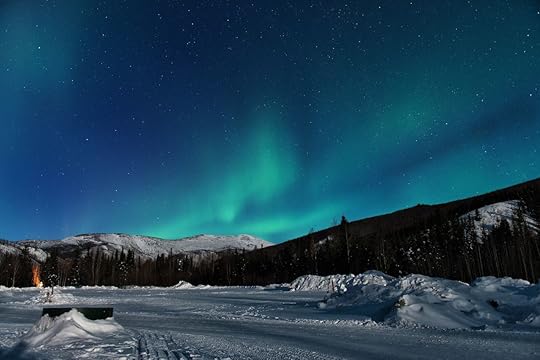
Photo: Hailin Chen/Shutterstock
It might sound like a lot of work just to glimpse some lights in the sky, but if seeing the aurora was easy, it wouldn’t be nearly as memorable. The northern lights aren’t just about the “seeing,” but the “chasing.” It’s the potentially arduous, hopeful, sleep-deprived search for the elusive phenomenon. When you do finally see them, that makes it even more special. 

More like this: The 5 most epic, unique ways to see the northern lights
The post Fairbanks, Alaska, is the best place in the US to catch the northern lights appeared first on Matador Network.

Otters, orangutans playing together

In an era where humans are barely interacting with other humans, pictures of unlikely animal friendships are a welcome sight. At the Pairi Daiza zoo in Brugelette, Belgium, a romp of Asian small-clawed otters live in a river that flows through the zoo’s Indonesian Flower Temple, which happens to be the home of a family of three orangutans. Now, these neighbors are more than just casual acquaintances — they are full-fledged friends.

Photo: Pascale Jones Photography/Facebook
Pairi Daiza spokesperson Mathier Goedefroy told Lonely Planet, “The otters really enjoy getting out of the water on the orangutan island, to go and play with their big, furry friends. Especially baby Berani and daddy Ujian have developed a very special bond with their neighbours.”
Goedefroy explained that proper socialization is crucial to stimulating the minds of animals, and a big part of that is finding other species with whom they can interact. “An animal — and this is even more the case of orangutans, with whom humans share 97% of their DNA — must be entertained, occupied, challenged and kept busy mentally, emotionally and physically at all times,” he said.
This cross-species socialization occurs in addition to the zoo’s enrichment program for orangutans, where zookeepers keep them entertained with mind games, puzzles, and riddles. 

More like this: How to make sure your animal encounter is ethical
The post At this Belgian zoo, orangutans and otters make unlikely friends appeared first on Matador Network.

April 6, 2020
Solo travel teaches self-reliance
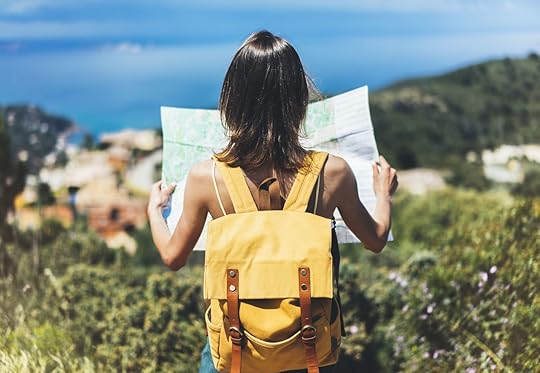
I bought the train ticket to Caen on impulse. I knew exactly one fact about the coastal French town: It’s located just a few miles from the Normandy landing beach where American troops launched their offensive against German forces in Nazi-occupied France. Intrigued by this bit of history, my research ended there. When I boarded the train bound for Caen from Paris in the summer of 2013, I didn’t have a hotel room booked or a map saved to my iPhone (this was before Google Maps was ubiquitous). I didn’t know the name of a single restaurant. My overnight stay in Caen, as you can probably imagine, was a total disaster.
I had been in France all of four days when I decided to take my little detour, and I spent most of that time paralyzed by anxiety and hunger. Afraid of being laughed at by waiters because I didn’t speak a word of French, I had to gather my courage on the street before stepping into a restaurant. Crushed by jet lag, I roused myself in the late afternoon and then spent the rest of the day trying to hit all the tourist spots before closing time. I was, in other words, totally unprepared for what traveling alone would mean: There was no one to wake me up, tell me to get moving, or back me up when I felt nervous asking a stranger for directions (or to see the lunch menu).
So the trip to Caen was, thinking back on it, probably an opportunity to prove to myself that I could do it. That I could emerge, on my own, in this totally unfamiliar place, unscathed. But the second I got off the train at Gare de Caen, I knew I made a mistake. As the panic set in (I had absolutely no idea where I was!), I followed the crowds to the center of town and walked into hotel after hotel looking for a room. Everything was booked. I wandered around downtown Caen so distracted by the prospect of sleeping outside for a night that I couldn’t tell you a single feature of the town besides the fact that it’s surrounded by steep hills — a fact I remember solely because I walked up and down most of them looking for an empty hotel.
As daylight began to fade, I realized I was not only temporarily homeless but also lost. I was genuinely scared, probably the most afraid simply standing alone on the sidewalk I have ever been. I considered tracking down a police officer and appealing to him or her for assistance, but I pulled the straps of my backpack onto my shoulders, took a few deep but very unsteady breaths, and kept walking. Eventually, I found a hotel, and so exhausted by the ordeal, I stayed in my room all night watching reruns of Supernatural in French.
Generally, I think it’s a good idea to ask for help if you really need it. And it’s also important to note that I never felt any external threat — except perhaps the next day when I got catcalled outside the train station, but that happens to me in America, too. But I was embarrassed for myself, for how badly I had messed up and put myself in potential danger. So I decided that I would have to fix it for myself, and I’m glad that I did. Standing on the sidewalk in Caen, the thought that changed my life forever dawned on me: You are enough. You’re clever enough and tough enough to figure this out. I stopped hearing I can’t, I can’t, I can’t, and a much clearer voice announced, You can.
Getting myself to safety made me feel powerful. I was 23 at the time, in graduate school in New York City, and yet very much sheltered and looked after. My dad paid my rent. In college, I worked at American Apparel to support myself, but other than that I had never had a full-time job outside of school. But this I had done myself. My day and night in Caen was a gateway to real independence, to the idea that I am capable of taking care of myself, even when it feels inconvenient and difficult. I learned to manage my fear (not to overcome it — fear kept me alert, a yellow light blinking in my head that would turn to red if and when I lost control of the situation). In turn, I earned a new skill: self-reliance.
Later in the month, I would hop on another train, this time to Brussels. I picked a cheap ticket, which meant I had to wait for my connection to Munich overnight. I felt a bit like Sal Paradise in On the Road, drinking endless cups of coffee from a vending machine so I wouldn’t fall asleep until my train arrived in the early hours of the morning, but I was not afraid. Maybe I should have been, but I wasn’t. Because I had become the keeper of secret but powerful knowledge: that I am capable, up to a reasonable limit, of not just existing, but thriving alone.
This is an important lesson for anyone traveling alone to learn, but I think it’s particularly important for young women. We’re constantly barraged with messaging that casts women as naive and weak, incapable of navigating the world without the protection of, usually, a man. Someone to hold our hand and help us step over puddles. There is absolutely nothing wrong with asking for and receiving help — we couldn’t survive in society without support — but it’s necessary for women to learn how to manage unexpected hardships on our own, if only to disprove the insidious lie that once life gets tough, we need to be rescued. We don’t. We can rescue ourselves. 

More like this: It’s 2020. Stop pitching solo female travelers ‘safe’ destinations.
The post The most important thing solo travel taught me is self-reliance appeared first on Matador Network.

Global Pride 2020 livestreamed

Over 120 Pride events around the world have been canceled or postponed in response to the coronavirus pandemic. Although this news is devastating, LGBTQ leaders are finding new ways of creating community in the Digital Age thatt may result in the most inclusive Pride celebration the world has ever seen.
On April 1, InterPride and the European Pride Organisers Association announced they’re working with international LGBTQ organizations to present Global Pride 2020, a live-streamed festival scheduled for Saturday, June 27. This means the event will be accessible regardless of disability, location, or socioeconomic status. Anyone with an internet connection will be able to participate. For many Pride events around the world, this level of accessibility will be a first.
Although the queer community prides itself on radical inclusivity, we don’t always practice what we preach. Last year, NYC’s World Pride events attracted nearly five million revelers, and the parade lasted well into the night with clamoring crowds melting onto the hot city asphalt for hours on end.
For individuals with mobile, visual, or auditory impairments, the streets were barely navigable. For the neurologically atypical, the city’s overwhelming stimuli left much to be desired.
These problems aren’t anything new for the world’s biggest Pride celebrations. Event organizers often forget to think about LGBTQ individuals with intersectional identities when creating community spaces. Entrances might not be wheelchair accessible, rallies may forgo an ASL interpreter, and video presentations might not offer closed captioning. There is rarely enough thought given to how sensory stimuli in large crowds affect people who are neurologically atypical, and there are seldom spaces created to help them feel safe while celebrating.
Last year, while attending a Pride rally at Manhattan’s Delacorte Theater, I watched as Ryan Haddad, a gay actor who uses a walker, realized there was no ramp for him to access the stage. He was one of the event’s speakers. In June of 2018, queer NYC resident Lynn Zelvin, who is blind and uses a guide dog, was refused entry at the Stonewall Inn, the epicenter of the modern LGBTQ rights movement. This lack of thoughtful inclusion can leave queer people with physical or developmental disabilities feeling invisible.
A live-streamed event will amend many of these problems by creating a level playing field for people of all abilities. There’s no place more accessible than the homes in which we live. It will also give people without the option of celebrating Pride in their towns a chance to participate. While some queens may sashay down their Main Street waving a rainbow flag with impunity, others barely dream about coming out of the closet. It’s easy to forget in liberal city centers that same-sex sexual activity is still considered a crime in more than 70 countries around the world. By creating a visible international platform, Global Pride will provide virtual queer spaces in areas that might otherwise have none.
These fixes are mere bandaids for bigger problems, however, and queer leaders shouldn’t forget the lessons we’re learning as a result of the pandemic. Making Pride inclusive takes consideration, communication, and creativity. Live-streaming Pride is only one of the many ways we can build accessible community events.
Once this pandemic passes, which it will, let’s hope we remember this year as a turning point. We all know the pain of isolation as a result of the coronavirus. Let’s not forget these valuable lessons once we head back out into the world.
In a statement about this year’s digital Pride, InterPride co-president J. Andrew Baker said, “We need community and connection more than ever. This gives us an opportunity to both connect and celebrate the LGBTQIA+ community’s resilience in the face of this pandemic and the true spirit of Pride.”
When we’re free to celebrate shoulder-to-shoulder on our streets again, remember how important connection is for everyone, and how easy it is to connect when we use our resources mindfully. Global Pride 2020 has the potential to be the best-attended and easily accessible queer event in history. If we use this year as an opportunity to grow, imagine what Pride will look like in 2021. 

More like this: 10 LGBTQ headlines from around the world that prove there’s a lot of good happening
The post Global Pride 2020 going virtual is a lesson in making Pride accessible for everyone appeared first on Matador Network.

Bothies in the Scottish Highlands
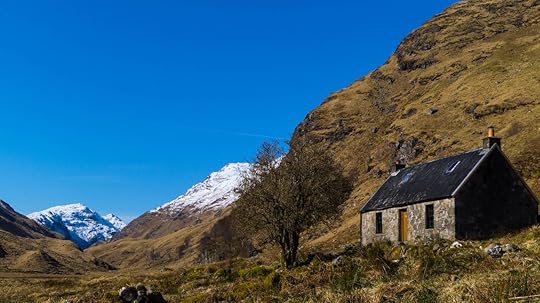
In the windswept mountains of the Scottish Highlands a keen eye might spot, in the vast treeless expanses, a tiny outcropping that is too angular to simply be a large rock. It’s actually the roof of a bothy. These backcountry lairs are favorite destinations, or stopping points along a longer trek, for lovers of wild nature and lonely places — as they can be quite secluded and accessed through a hard hiking trail. To travel to a bothy is to journey into some of the most remote spots of the Scottish Highlands. Here is what you need to know about bothies, and some of our favorites to visit.
What is a bothy?
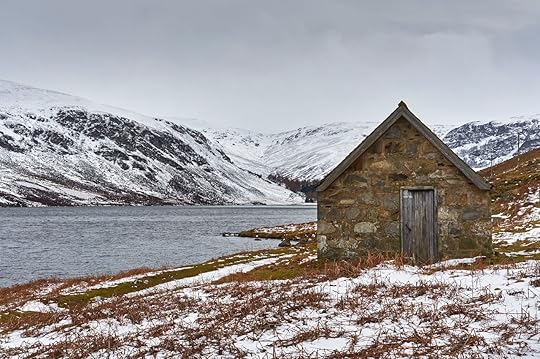
Photo: Woofit/Shutterstock
A bothy is a simple shelter found in remote areas of Scotland. Most are historic buildings restored to basic windproof and watertight standards, made available for the public. They are free to use although accessibility restrictions might apply depending mostly on the land usage, such as shepherding or deer stalking. Also, there is a code that’s expected to be respected, which amounts to just being clean and considerate. They vary in size, from small single-rooms to two-story cabins. They usually have the same common features: a designated sleeping area, either an upstairs space or a raised platform to minimize sleeping in cold spots; no available bedding, beds, or mattresses; a fireplace; and a spade for burying human waste, as few have toilets. By definition, bothies are reachable only by foot, cycle, or boat, and they’re typically located near running water.
As romantic as it sounds, though, most people don’t accidentally come across a bothy — that would be too much of a needle-in-a-haystack situation. In the past locals, primarily farmers or loggers, knew their locations, and in the present, hikers specifically aim for them by following maps. In fact, since its founding in 1965, the charity Mountain Bothy Association (MBA) oversees 100 bothies and their maintenance, offering detailed information such as locations and conditions.
While you can find some bothies in Scotland and Northern England, and even a few in Wales, Northern Ireland, and the Isle of Man. Predominantly, though, they’re found in the Scottish Highlands and are thus part of the local identity and the flair of the region.
How to prepare for hiking to the bothies
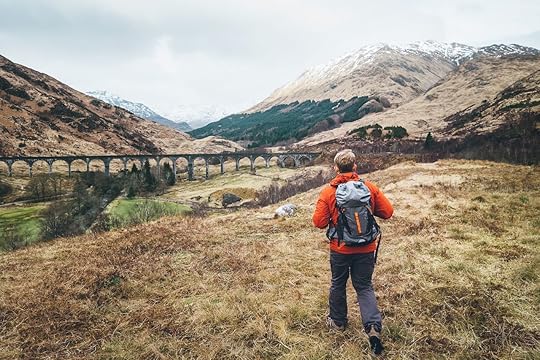
Photo: Soloviova Liudmyla/Shutterstock
Bothies can be in remote areas far from people, services… and help. That’s the point. Therefore, no matter how long the trip is to reach and stop at a bothy in the Scottish Highlands, you need to be self-sufficient and ready to handle adverse and unpredictable weather.
Research the route you’ll hike to know the types of terrain and the conditions of the paths, as well as elevation gain. Keep an eye on the weather forecast, although this is a general indication as the weather might change unexpectedly. The best option is to layer with waterproof and insulating clothes. Layers can be peeled off as needed although it’s never really warmer than 70°F (21°C). Good hiking boots are a must, as you might encounter quite different terrain, from grassland to rocks to peat bogs and anything in between. Check Matador’s backpacking gear guide for a full list of what to bring.
Unknown to many is how common ticks and midges can be. Midge bites are itchy and usually painful. Ticks might carry Lyme Disease. Carry repellants, a head net, and tweezers. Tuck your pants in your socks. Check for the insects’ presence on or around you before picking a resting stop. Extra rations of water and food are always a good idea. Many hikers like walking sticks, but this is a personal choice depending on habit, fitness level, and route type.
As a reminder, once at a bothy, follow the Bothies Code.
Bothies to visit in spring and summer
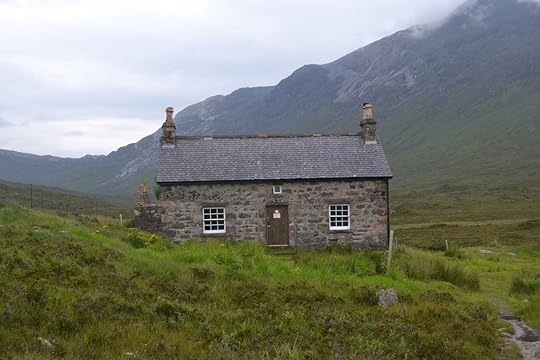
Photo: Dave A Bennett/Shutterstock
Here are some suggestions for journeys with varying difficulty, terrains, length, and bothies.
Ben Alder Cottage
Location: Central Highlands
Starting point: Rannoch Station
Length (round trip): 10 mi/16 km
Difficulty: Medium
Ben Alder Cottage is not just a bothy in the middle of the moors on the shore of a loch. It’s also said to be haunted. To find out if that’s true, start from Rannoch Station along the West Highland Line railroad. A minibus takes you east along the narrow road (B846) to the trailhead at Bridge of Gaur, right by the eastern tip of Loch Rannoch. Head north. For the first half of the hike, the landscape is a mixture of views and elements as the undulating terrain has many thick spruce woods and granite-capped hills. You arrive at the southern tip of Loch Ericht where you can fish trout if you have time. Continue along the shore.
The view sweeps the length of the quiet Loch, its 14.5 miles (23.3 km) straight as a pin. Both shores rise gently, and the woods give way to sparse clusters of trees, the spruce’s pointy tops distinguishable now. More bare rocks are seen here among the fields, the grass dark brown or dark green depending on the season. The track ends but there is a clear trail to continue ahead, until you turn inland at a rocky knoll, or a small hill standing amidst flatter surroundings, called An Grianan. Shortly after, you’ll cross a little bridge over Alder Burn Creek, and you’ll have the bothy in sight, overlooking a small semi-circular bay. It’s a long, narrow, one-story building in two parts. The older, gray stone structure dating to 1871 is always open to the public while the dark timber addition is reserved. Access is never restricted. If you have caught any trouts, cook them over the campfire.
Suileag Bothy
Location: Northern Highlands
Starting point: Rannoch Station
Length (round trip): 6.2 mi/10 km
Difficulty: Easy to the bothy, hard to Suilven mountain
Start from Lochinver, a small village on the coast, and follow the narrow road straight east. It’s unlikely you’ll see any traffic. For most of its length it’s flanked with thick vegetation in trees and underbrush, and the area is quite lush. Once you’ve passed Loch Druim on your right, the path is well marked and continues east and slightly south. The gently undulating terrain here is of open moors swept by the Highlands’ ubiquitous breeze.
A sign marks the turn for the bothy. A single-story stone construction, it comfortably fits six people. The hike was simple but the reward is the south view towards Suilven, a contrast of dark shadows and bright grassy fields, as it’s always against the sun. Beyond the bothy, the terrain becomes more undulating and barren, rising up to the sandstone mountain towering over the area. The hike there is only 2.2 miles (3.5 km) but along a steeper trail and among bogs. Although not dangerous, this bothy usually attracts more experienced hikers and mountaineers — as the real goal for many, once at the foot of Suilven, is to actually climb Suilven.
Glenpean Bothy
Location: Western Highlands
Starting point: Loch Arkaig western tip
Length (round trip): 6.2 mi/10 km
Difficulty: Easy
The parking is at the western edge of Loch Arkaig, surrounded by brownish and green fields devoid of trees and no rocky sides. It looks all bumpy because of the tussocks, clumps of thicker and taller grasses that cover everything in sight. You’ll follow the River Pean valley on the north side but from the forestry access track higher up. There isn’t much color variety, but fortunately a big stretch of woods starts after a few minutes, and you’ll walk immersed in trees for most of the time, a rare occasion in the Highlands.
The route is easy until about 500 yards in when the track stops and you need to figure a way through roots, puddles, and tussocks. Always open, the 1870 bothy is small but well kept, with two rooms downstairs and some additional sleeping space in the attic. It’s not insulated, so it’s never warm inside but has plenty of firewood. The mountains rise steeply on both sides of the valley. Quite a few rivulets carve the green slopes on both sides. The south and west views are treeless but peaceful. It’s slightly less breezy here, or windier, depending on the season. With a little bit of mist the view gets eerie; even more if you’re lucky and see a deer drinking from the river below.
Guirdil Bothy
Location: Islands of the Western Highlands (Isle of Rùm)
Starting point: Kinloch
Length (round trip): 11 mi/18 km
Difficulty: Medium
Take the 80-minute ferry ride from Mallaigh to Kinloch on the western coast of the Isle of Rùm, south of the Isle of Skye. The walk follows the only road on the isle, which eventually splits into north and south directions about halfway through the walk. Head north towards Kilmory. The isle’s name comes from the ubiquitous hue of dark red color given by the iron ore present in the rocks. The hue is pervasive also because the island has very little vegetation, just a layer of grass. The undulating landscape and little human presence make for an introspective hike. The perhaps monotonous island makes for even greater contrast upon reaching the small bothy as this place is a meeting point of completely different views and natural features. The bothy sits by a tiny crescent bay, the gentle slope ending by the pale gray pebble beach.
On both sides the terrain rises steeply, and the rugged coastline is marked by rough rocks covered in grass and moss. This makes for a constant roar — or “tumblin’ burn” as some call it — and in fact Guirdil’s name comes from the Norse Giùadal meaning “deep chasm.” On the horizon, the outline of the Isle of Canna stands high over the sea. The bothy is from 1848 and with the adjacent ruins was a crofting community. “Crofting” is a Scottish traditional social setup of small-scale food production particular to the Highlands, so integral to Scottish culture to have its own commission. The bothy is small but well kept, and a camping ground is available closer to the beach. 

More like this: Scotland’s Speyside Whisky Trail is a tough trek with delicious perks
The post The bothies of the Scotland Highlands are remote hideaways you can hike to appeared first on Matador Network.

What is Songkran, or Thai New Year

Traditionally Songkran, or Thai New Year, was marked by the quiet practice of blessing Buddha statues, but today it has become a far more raucous affair — so much so that it’s often referred to as the world’s biggest water fight. Vast crowds of revelers, locals and tourists alike, line streets across Southeast Asia armed with buckets of water, hoses, and huge, brightly colored water pistols. This is no place for bystanders; if you’re outside, you’re fair game.
Rather than one geographically specific event, Songkran celebrations take place all over Thailand, as well as the neighboring countries of Cambodia, Laos, and Myanmar (plus Xishuangbanna in southwestern China and the Indian states of Arunachal Pradesh and Assam), so it pays to go prepared. Read on for everything you need to know about Songkran.
What is Songkran?
Songkran celebrates the Thai New Year and the end of the dry season, which roughly runs from November until late March or early April. The day itself falls on April 13, but in Thailand, the period from April 13 to 15 is designated as a national holiday. However, the festivities often last several days longer.
What are the origins of Songkran?

Photo: CatwalkPhotos/Shutterstock
The name Songkran derives from the Sanskrit for “passage” or “movement” — a reference to the Sun’s transition from one Zodiac position to the next. Technically, a songkran occurs every month; the correct name for the holiday period is actually Maha Songkran (Great Songkran) as it coincides with the arrival of a new year in the solar calendar.
Traditionally, Thai people would celebrate the festival by visiting their local Buddhist monastery to leave gifts of food, say prayers, wash their Buddha icons, and bless their elders and monks by pouring scented water onto their hands.
How is Songkran celebrated today?

Photo: Mr. JK/Shutterstock
As Thailand’s longest national holiday, celebrants return to their home towns and villages to observe Songkran with their families.
Temple visits and water blessings are still integral to Songkran celebrations today. In northern Thailand, people heading to their local temple bring small bags of sand, which are used to build small sand stupas — an important form of Buddhist architecture noted for its mound-like appearance — that are then adorned with flags honoring the Budda.
However, the festival is undoubtedly best known for water fights. People of all ages fill their water guns and buckets to the brim and take to the streets, either on foot or in the back of pick-up trucks, ready to drench anyone they pass — and tourists are a prize target. Copious amounts of an off-white powder called din sor pong — a talc made from marly limestone — are also thrown around and liberally applied to people’s bodies and faces. In Songkran hotspots, such as Bangkok’s Silom and Khao San road, use of this powder has been banned in previous years due to fears that it clogs up the sewer system (although enterprising vendors often find a way to smuggle it in regardless).
What should I wear during Songkran?
Common sense dictates that anyone walking Thai streets during Songkran should dress for extensive water and talc attacks. Wear light clothing — particularly as April is also Thailand’s hottest month — and leave any valuables in your hotel. However, in many ways, Thailand is a conservative country, and this is still a religious event, so Songkran revelers should refrain from dressing too revealingly. Think shorts and t-shirts, rather than swimwear.
Where to celebrate the Songkran festivities?
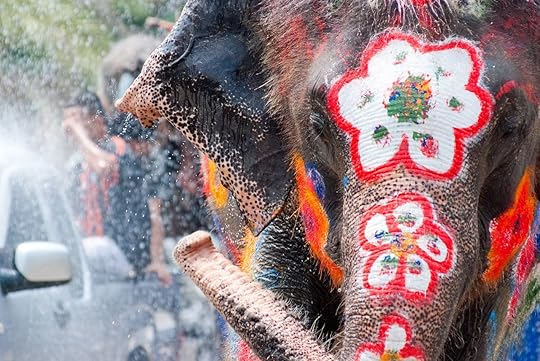
Photo: gnomeandi/Shutterstock
Songkran takes place across Thailand, but the biggest and most water-soaked events can be found in the country’s tourist hotspots. In Bangkok, official government-sponsored celebrations are held at Benjasiri Park where visitors are given a showcase of traditional Thai customs, food, and music. But the most spectacular water fights are centered on Khao San Road — the Thai capital’s backpacker hub — and the more upmarket, but equally tourist-packed, Silom Road. In northern Thailand, Chiang Mai — the country’s second city — is the place to be for Songkran. Sacred Buddha statues are paraded through the streets while raucous water-based warfare breaks out on the roads adjacent to the Old City moat and at Tha Pae Gate, the main entrance to Chiang Mai’s historic center. In central Thailand, the ancient former capital Ayutthaya is the setting for what is arguably the country’s most unusual Songkran celebrations, during which herds of elephants elaborately painted in bright colors spray water at crowds of onlookers.
Editor’s note: Songkran celebrations are officially canceled in 2020. Thankfully, you have plenty of time to plan for 2021. 

More like this: Thailand’s lesser-known Phanom Rung Festival is a feast for the senses
The post Songkran marks the start of the Thai new year with the wettest party on Earth appeared first on Matador Network.

Goggles for Docs collects goggles
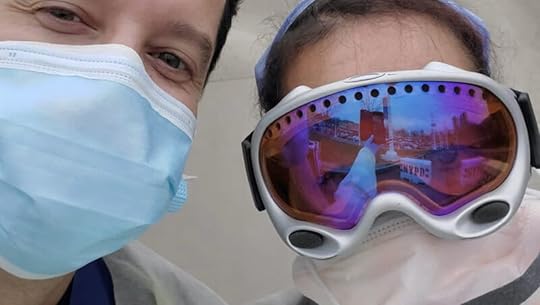
Ski resorts across the United States may have shut down for the season, but one piece of ski gear can still play a big role over the next couple of months — goggles. New York City doctor Mike Halperin, also a passionate skier, launched an initiative in late March to address the lack of protective equipment facing medical workers on the front lines of the coronavirus pandemic. Goggles for Docs is collecting new and used ski goggles for hospitals around the country, and as of Monday morning has collected over 13,500 pairs of goggles.
According to a report in Outside, Halperin’s idea quickly became a Google Sheet and Facebook group, which caught the attention of Trevor Crist and Gregg Blanchard from Vermont-based company Inntopia. The pair put up a website, Goggles for Docs, to serve as a “basecamp” for the collection efforts. The site explains how to deliver goggles and a running tally on the Goggles for Docs website notes the number of pairs needed per state. Click your state, and you’ll be directed to a Google Sheet with hospitals in need. Fill out the required information and mail the goggles to the address provided or bring them to a designated dropoff location. If you plan to donate a pair of goggles, be sure to follow the provided instructions to ensure they are clean and ready for use upon reception.
Tonight, April 6, at 7:00 PM ET, the nonprofit group Reverb will host a live virtual concert and fundraiser for Goggles for Docs featuring the Chad Hollister Band. The event will stream live via Facebook and aims to collect both cash and goggles for doctors and medical workers around the country. Financial contributions can be made via the Goggles for Docs website. 

More like this: This Facebook group is helping medical workers self-isolate by matching them with unused RVs
The post Donate your ski goggles to medical workers on the front lines appeared first on Matador Network.

How to find ethical animal encounter

If one man collectively got us through March 2020, it was Joe Exotic. No matter what weird events were unfolding outside, nothing could be more bizarre than what we watched in our living rooms across the seven episodes of Tiger King. But lost in the sensation of meth, mullets, and women who may-or-may-not have fed their husbands to tigers was the central issue of the show: the mistreatment of big cats at many of our nation’s animal encounters.
Moreover, tiger parks aren’t the only places that struggle with this issue. Elephant encounters in Asia have long been maligned for their poor treatment of animals, as have many marine mammal parks in the United States. That said, not all animal encounters are exploiting animals, and many are actually healthy and helpful for them. We talked to some ethical animal pros, and they told us what to look for to ensure your encounter is good by its animals.
Make sure the facility is accredited.
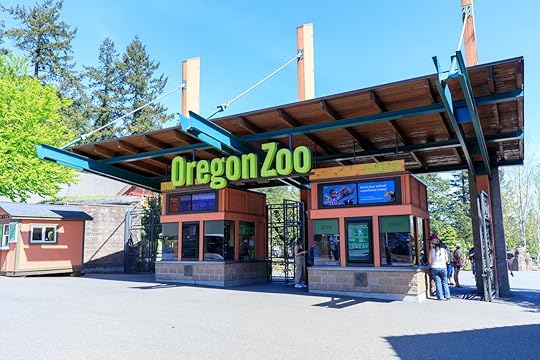
Photo: ARTYOORAN/Shutterstock
“The first thing you do is look for an AZA accredited facility,” says Tanya Paul, animal curator at the Oregon Zoo in Portland. “The USDA considers the AZA’s standards the national standards, and if you go to an accredited facility you’re going with the highest level of standards.”
This means the facility has been accredited by Association of Zoos and Aquariums, a member organization of American zoos that makes sure animals are treated ethically, safely, and humanely. Basically, it’s your way of knowing a facility is on the up-and-up.
Marine parks and aquariums have their own certifying agency, too: the Alliance of Marine Mammal Parks and Aquariums (AMMPA). Among other things, it subjects prospective members to a 325-page application describing operating procedures, animal training standards, veterinary practices, quarantine practices for new animals, and other processes. They are also inspected by the USDA, which has publicly available reports on each facility.
Do your research on the facility.
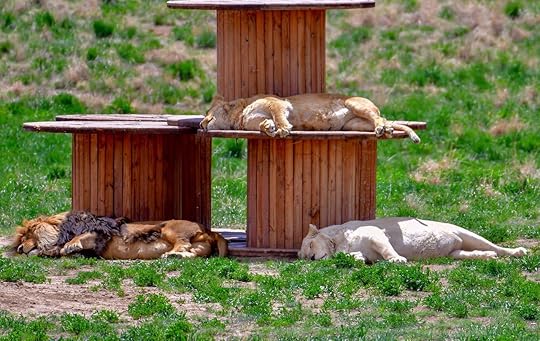
Photo: Grossinger/Shutterstock
Beyond scanning a website to make sure the facility is accredited, go online and do the same due diligence you might when looking into a hotel or restaurant.
“Go on TripAdvisor and other websites and read the reviews,” says Art Cooper, director of operations at Dolphins Plus in Key Largo, Florida. “You can’t make 100 percent of the people happy, but if you see an overwhelming trend that facilities aren’t upkept, they’re not feeding the animals, or animals aren’t being treated well, it’s hard to make that stuff up.”
Beyond user reviews, USDA inspection reports are also available online, and viewable by the general public. Cooper suggests examining a facility’s reports prior to going, and looking at the full report to see what remarks the inspectors made.
“Sometimes they want to provide a teachable moment,” he says. “Look to see if when [the USDA] came back in to inspect in the next round, if [discrepancies] were corrected. Many times we’ll make the correction before they even leave our facility. And that’s in writing in the report.”
Research the animals too.

Photo: kungverylucky/Shutterstock
“You want to ask critical questions about where the animals came from,” says Paul. “The exotic pet trade is very lucrative, and the animals are bred in horrible conditions, illegally obtained, or in some cases stolen from the wild.”
Like the big cats in Tiger King, animals bred in the private sector are often crossbred, genetically unstable, and create species that aren’t even found in nature. They do nothing to help the genetic viability of a species and can never be released.
Paul suggests researching the animals, their habitat, and what their social needs are as well; then examining the facility to see if it’s meeting those needs. Make sure the animal’s natural habitat is reflected in a facility, and that it’s placed in proper social groupings. A solitary animal like a sloth, for instance, shouldn’t be stuck in a cage with a dozen other sloths.
Think about the encounter empathetically.

Photo: Japan's Fireworks/Shutterstock
Obviously, you love animals, or you wouldn’t spend good money to interact with one in person. But beyond getting to cuddle a lemur, think about what your motivation is for the animal encounter. Are you doing it for good social media content? Or are you generally concerned about the animal’s welfare? If it’s the latter, chances are you’ll pick an ethical facility on your own.
“Really look at it empathetically,” says Paul. “I know we’ve seen a lot about baby animals used for photo shoots…[In those cases] it’s removed from its mother, in a situation where it’s surrounded by predators — most animals consider us predators — it’s probably cold and uncomfortable. And we are putting them in this situation. If you love them and want to see them in the wild, see that your behaviors are contributing to that.”
See if the animals have a choice in what they do.
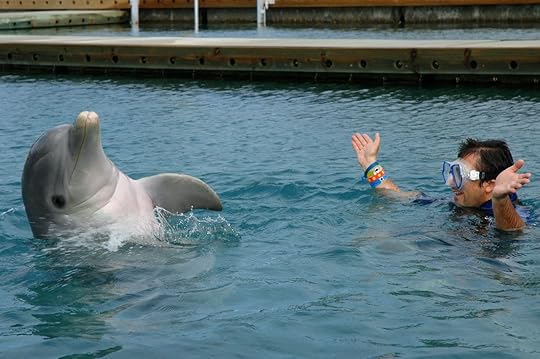
Photo: Remanz/Shutterstock
When I did a dolphin encounter at Dolphins Plus, our trainer blanketly told us during the pre-encounter briefing we’d be doing whatever the dolphins felt like doing. And going as long as they want to go.
“They may just decide they’re done for the day,” she said. “And that means we stop.”
This is the one of the telltale signs of a place that treats its animals ethically; giving them a choice to participate, and for how long, is indicative of a facility that prioritizes animal welfare.
“See if they have the choice to leave if they’re anxious,” says Paul. “All of our programs, animals are allowed to choose. They can escape at any point, they dictate when they’re ready for the program to be over.”
Part of this choice, Paul adds, is if the group size is appropriate for the specific animals, and if the environment is one the animal would choose. Predators, she says, prefer quiet and calm environments, so large shows with big crowds are not inherently where these animals would choose to be.
Find out what the animals are getting out of it.

Photo: ALIAKSANDR PALCHEUSKI/Shutterstock
Animal encounters shouldn’t be a one-way street. Sure, you may enjoy getting to spend time with an animal you’d likely never get to in the wild. But the animals should have some needs met as well.
“Put yourself in the animal’s shoes, and that tells you if the animal is benefitting,” says Paul. “A lot of people feed the animals, and feeding is a basic need. But what they get out of it varies on the species and animal itself. Is it getting food? Security? Grooming? All these animals have something they’re getting out of it; just make sure that they are.”
Trust your instinct.

Photo: bezikus/Shutterstock
Most of all, trust your gut. A facility should pass the smell test, both literally and figuratively, and if a facility looks like it’s not treating its animals well, it most likely is not.
“You get a feel for it when you walk through the door,” says Cooper. “If encounters are small and not clean, if water bowls look like they have mold in them, it doesn’t take a rocket scientist to say this isn’t how I’d wanna treat my family pet.” 

More like this: ‘Tiger King’ was entertaining as hell, but it failed in one important way
The post How to make sure your animal encounter is ethical appeared first on Matador Network.

Matador Network's Blog
- Matador Network's profile
- 6 followers



